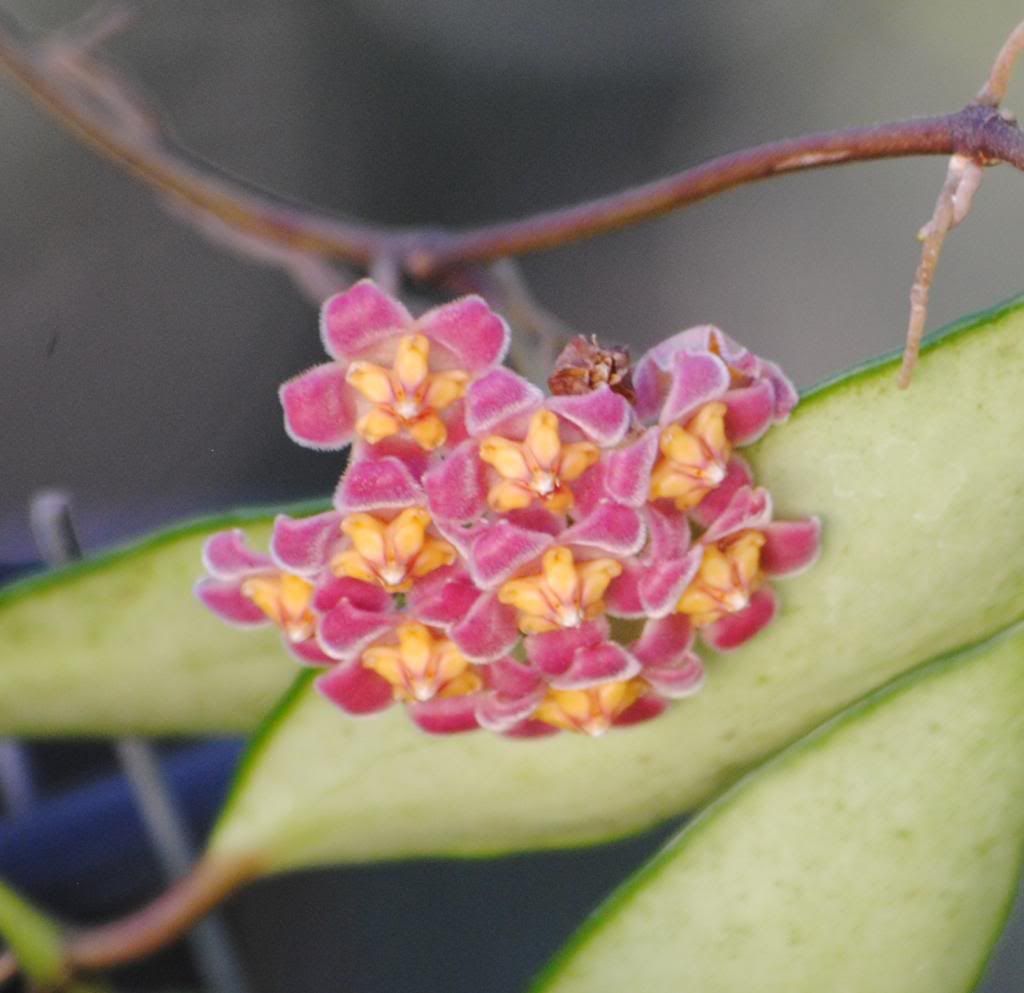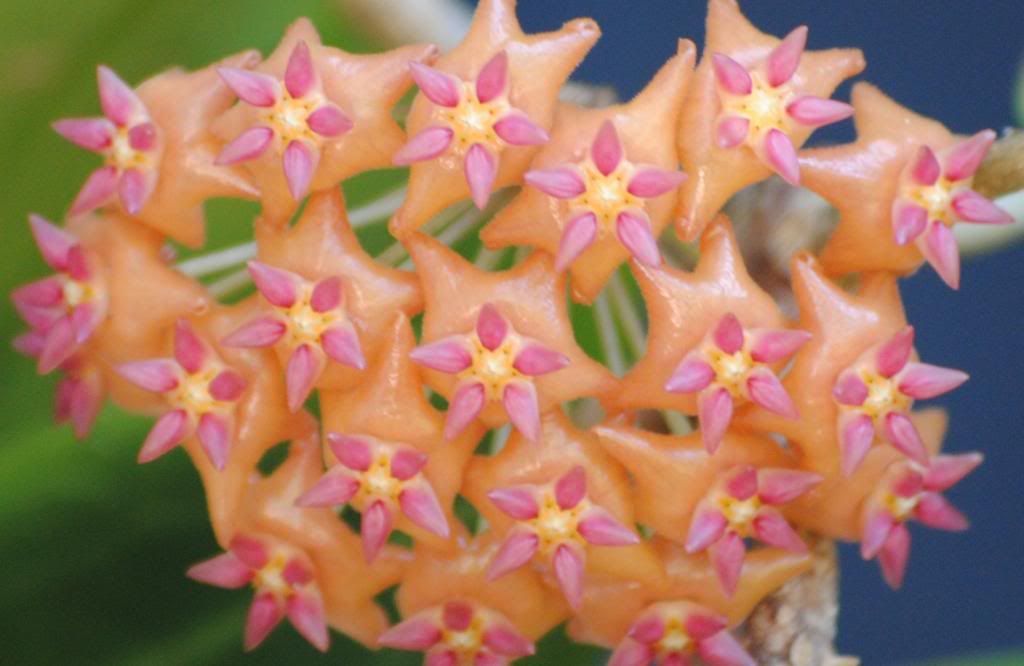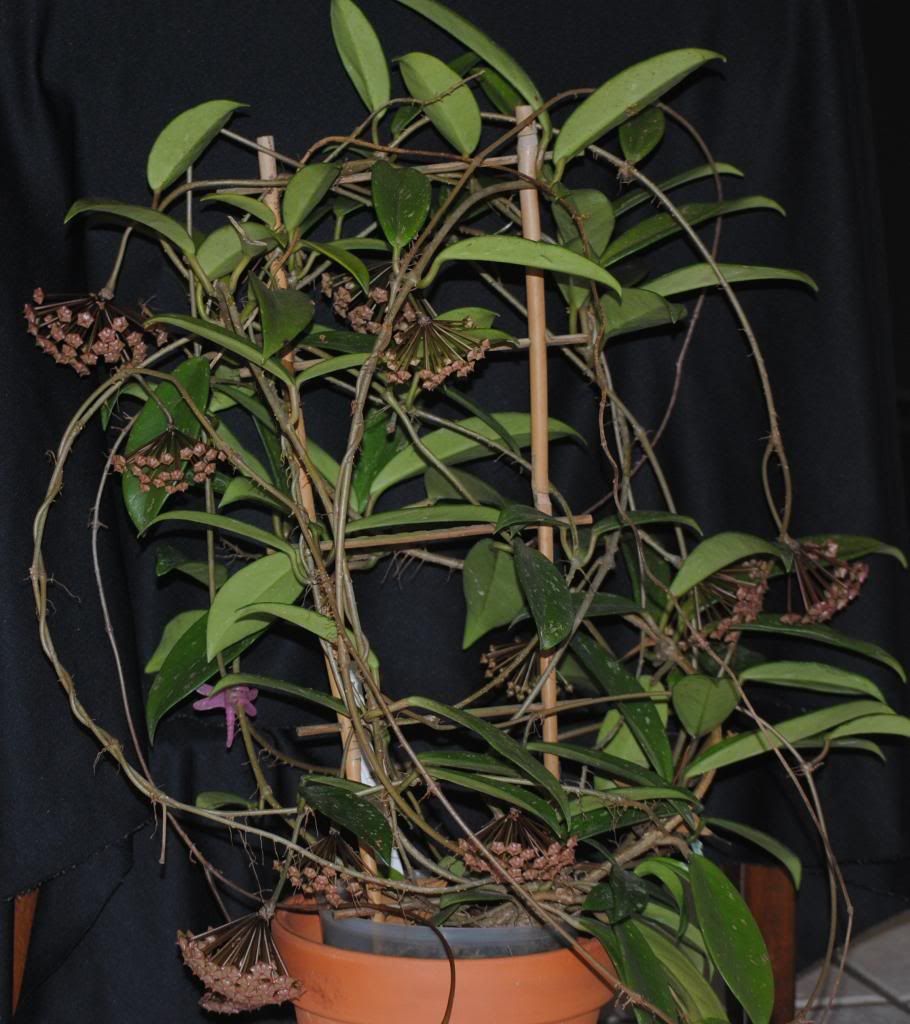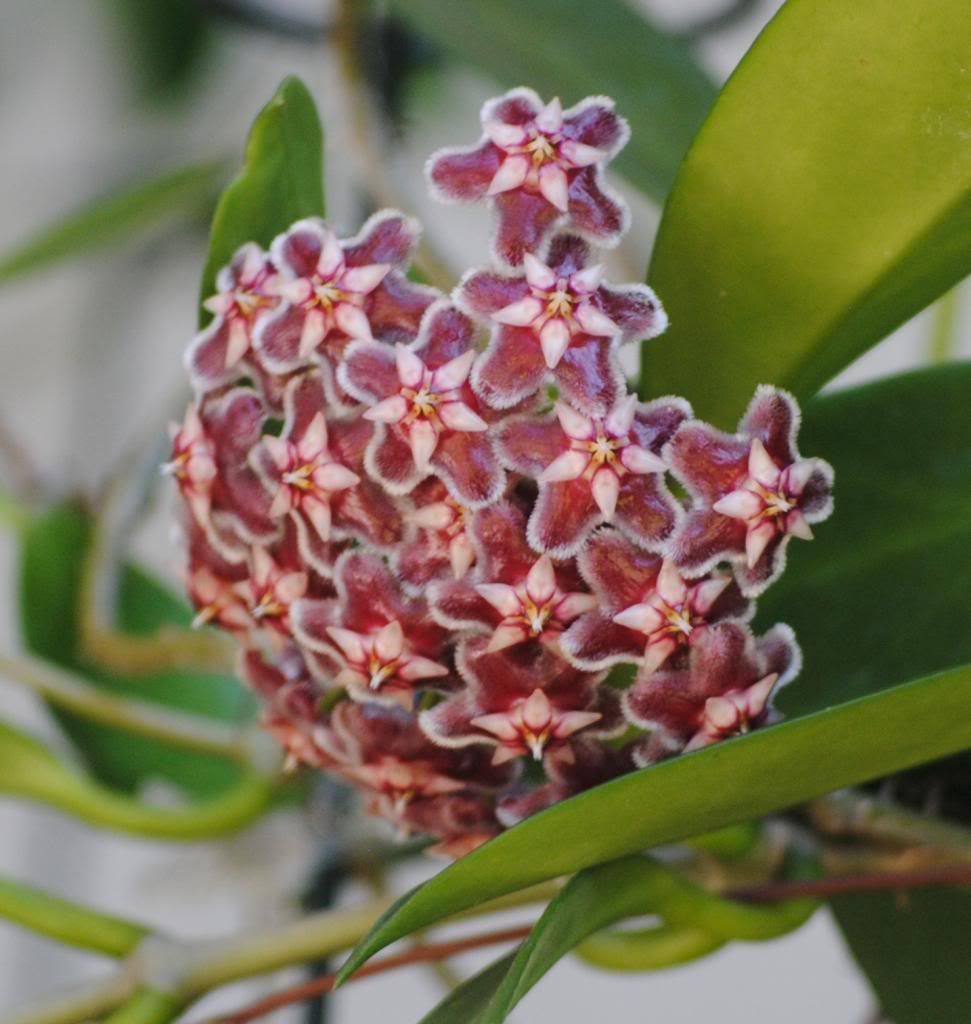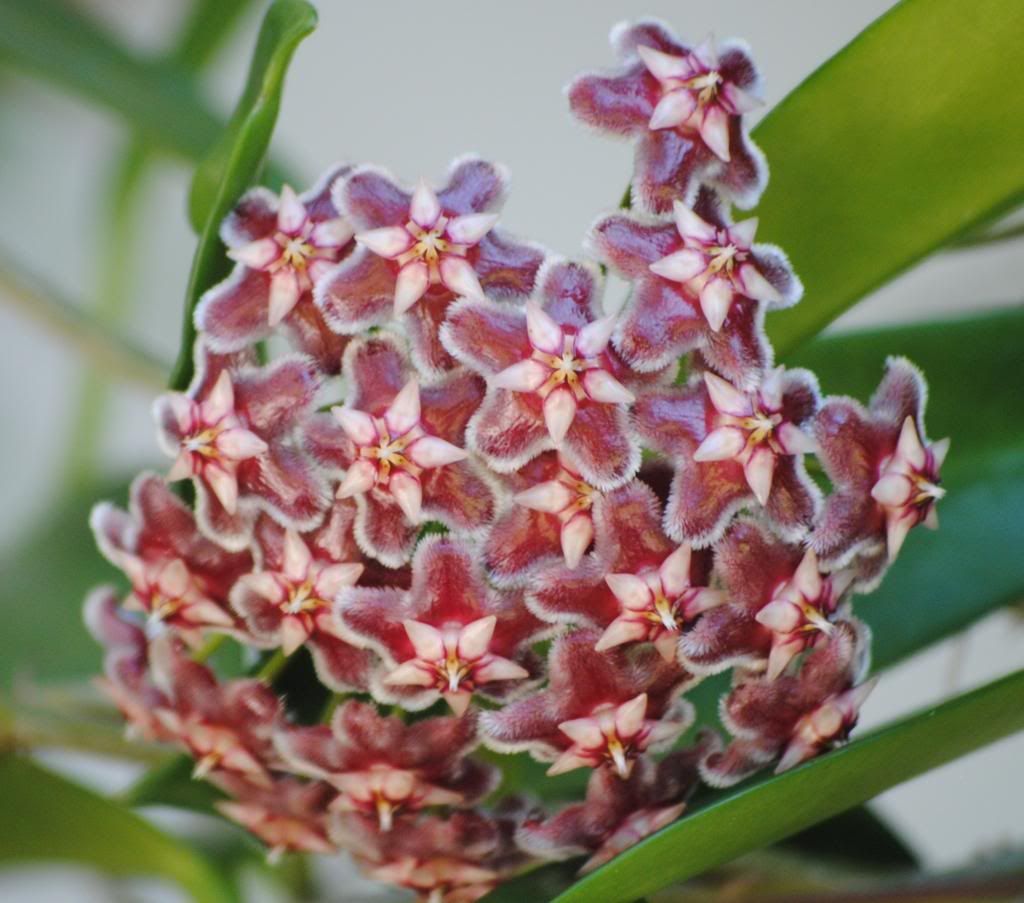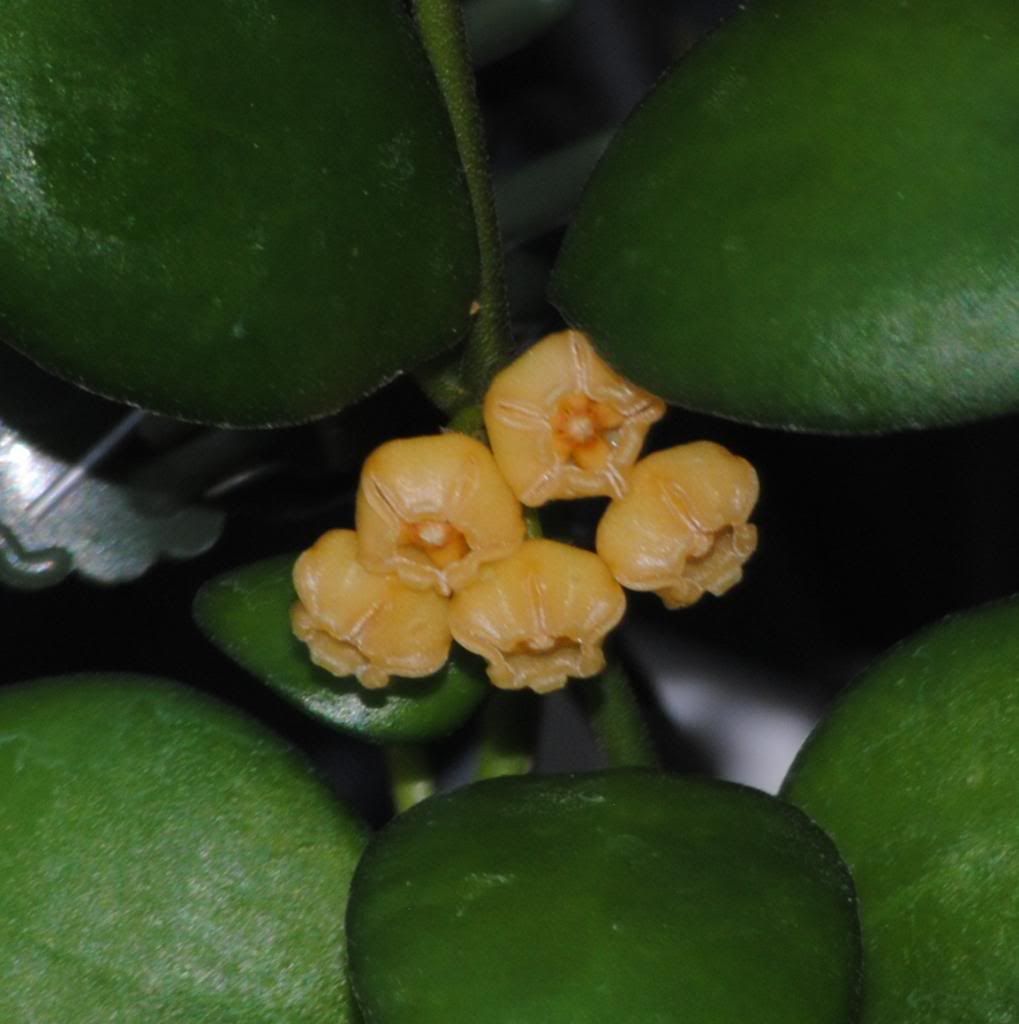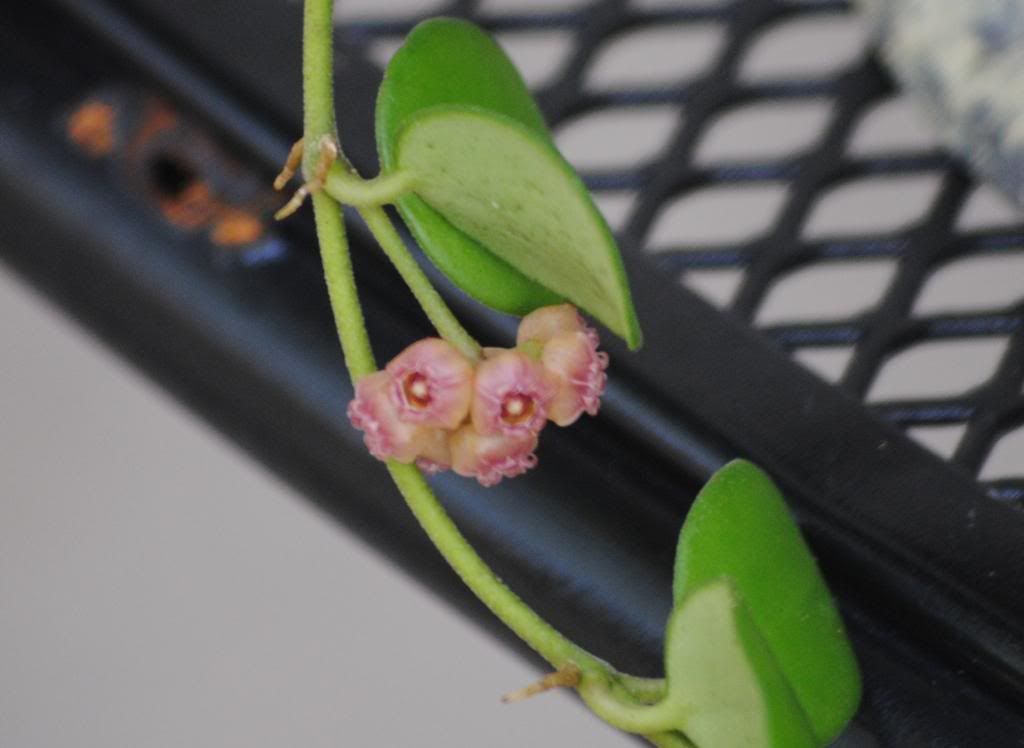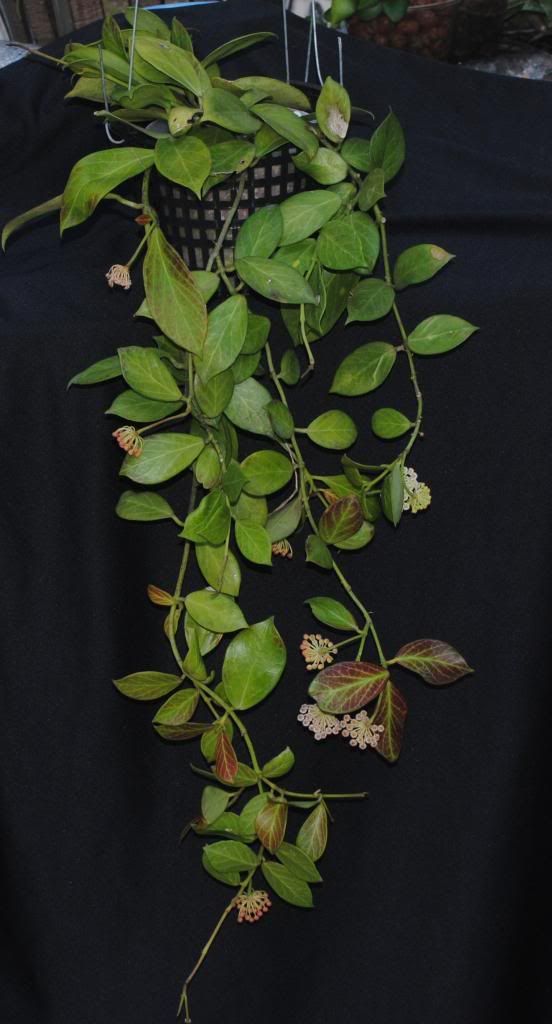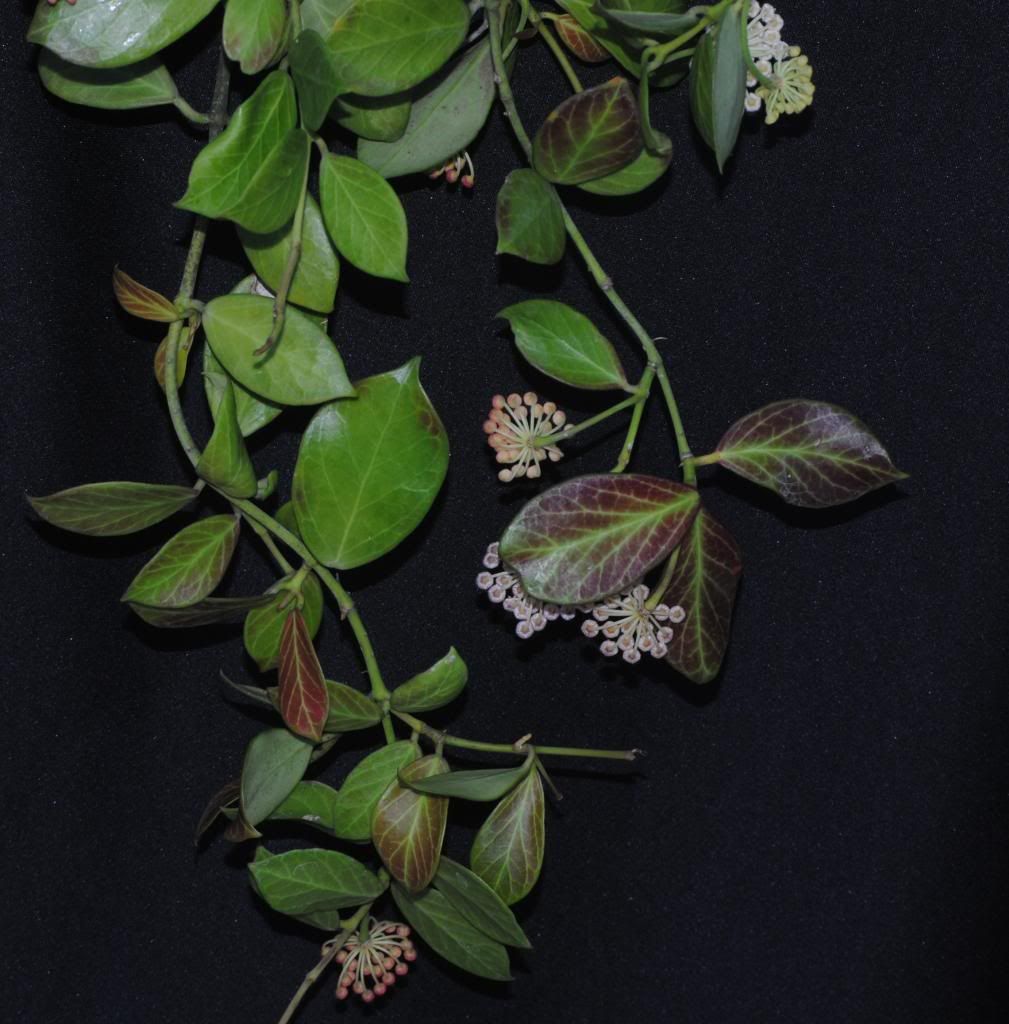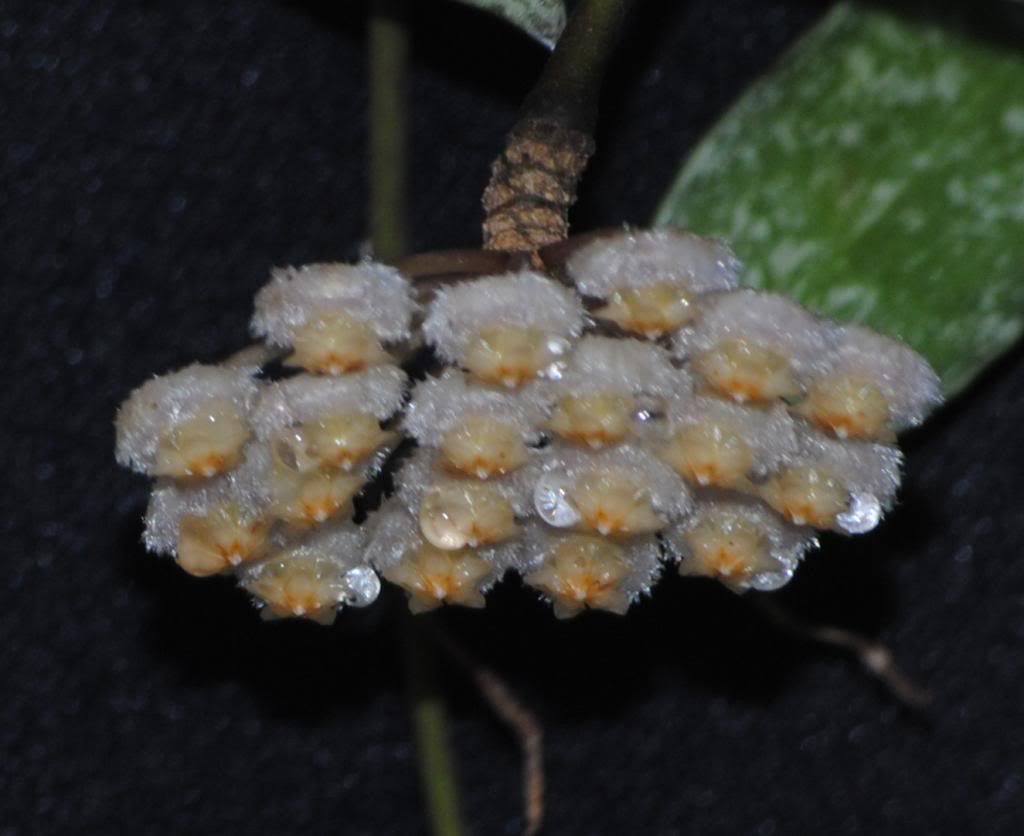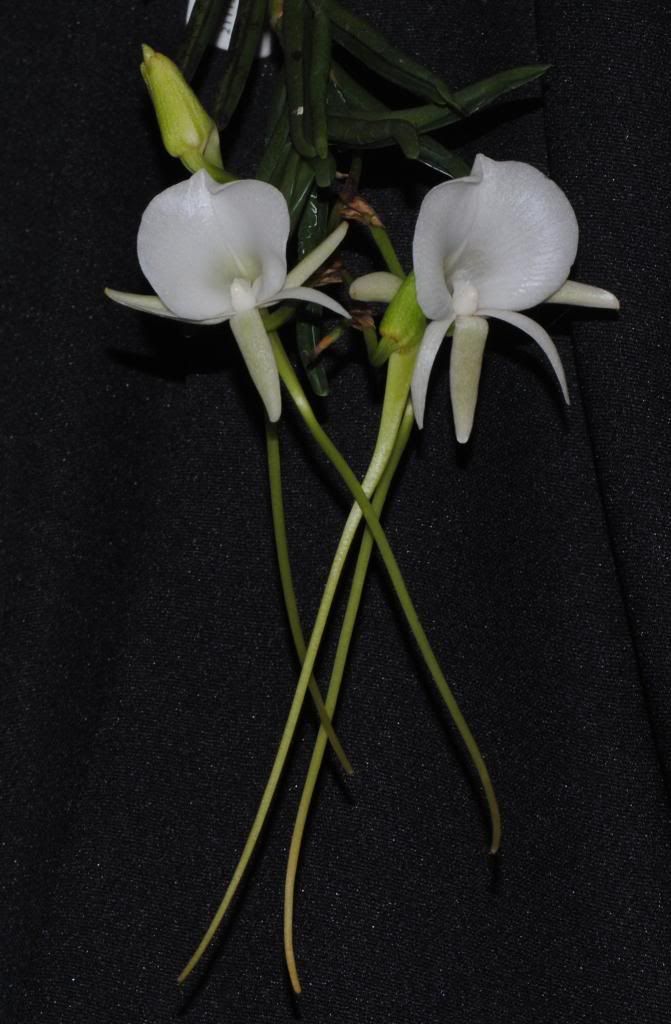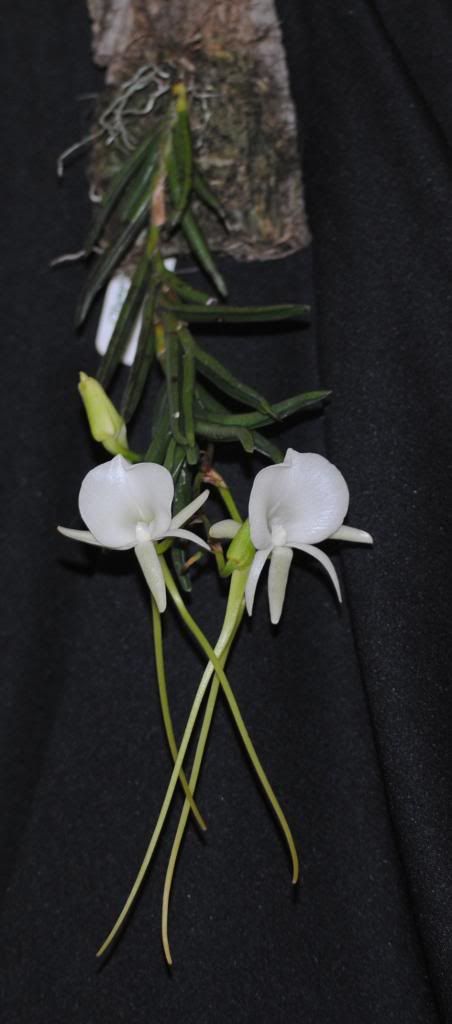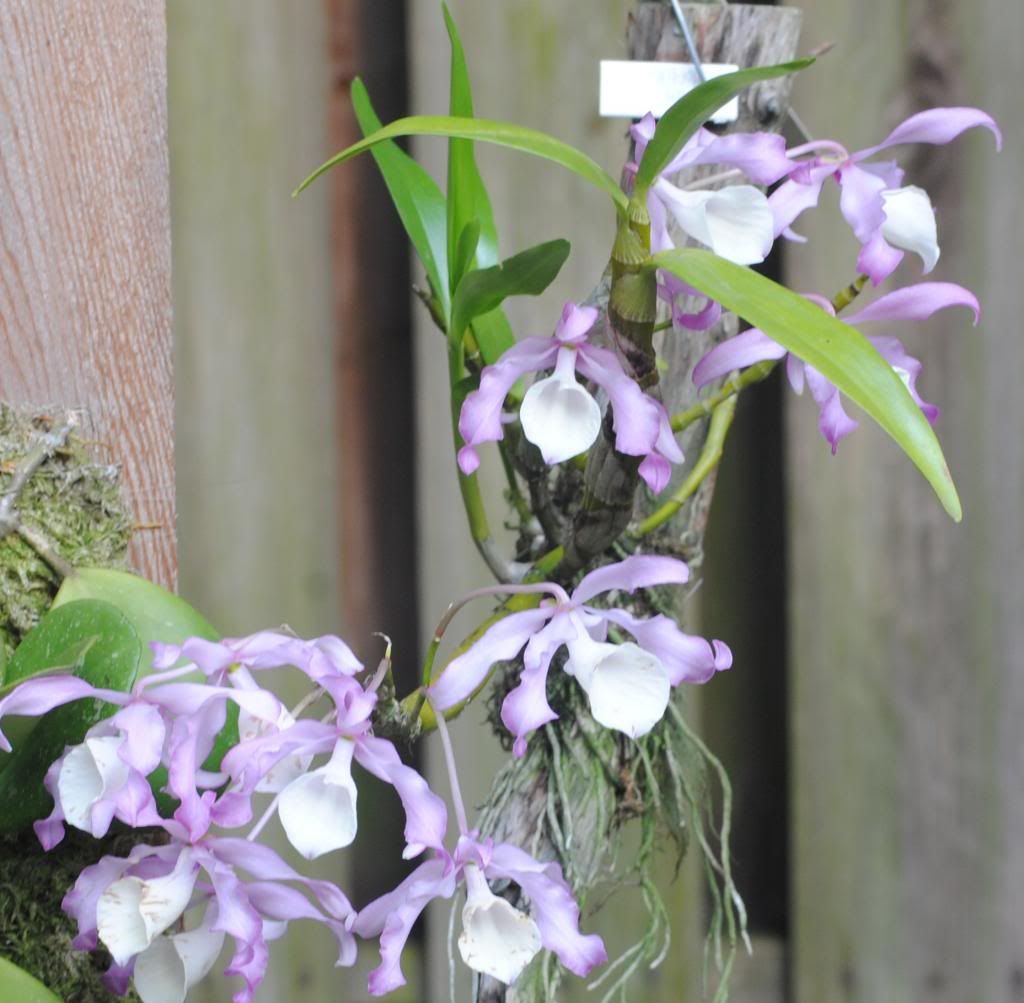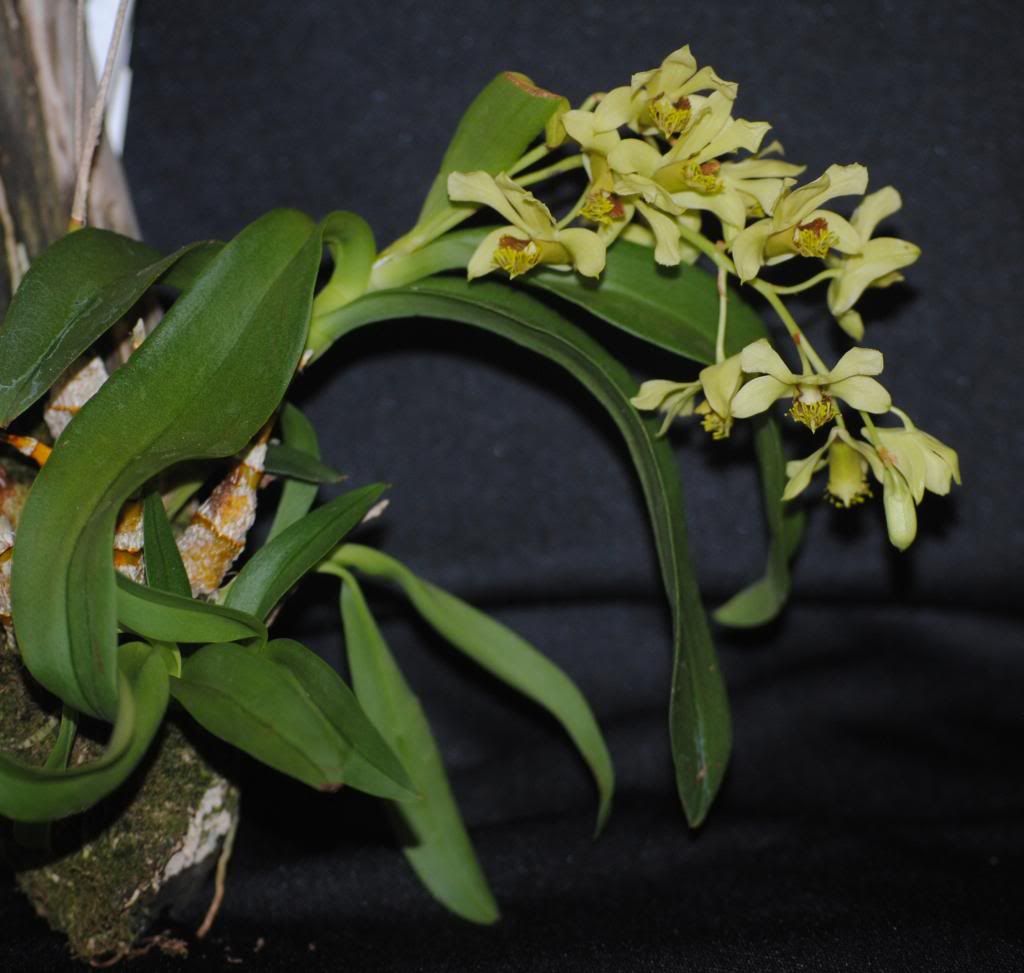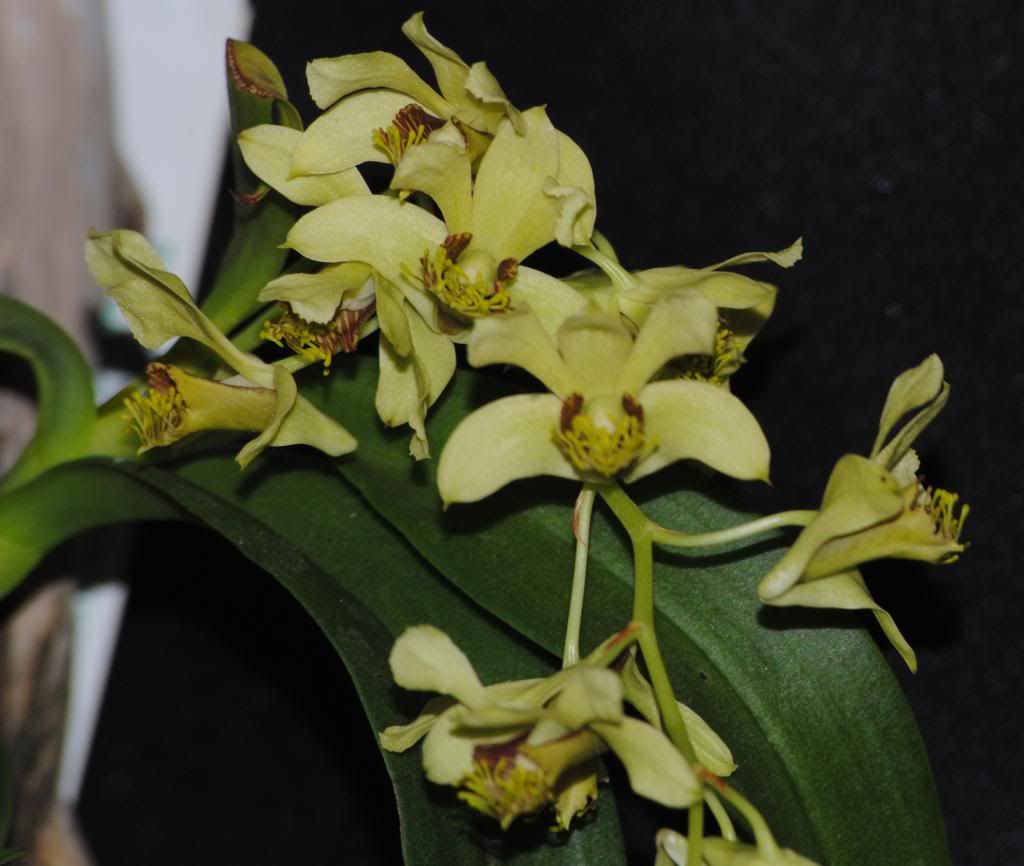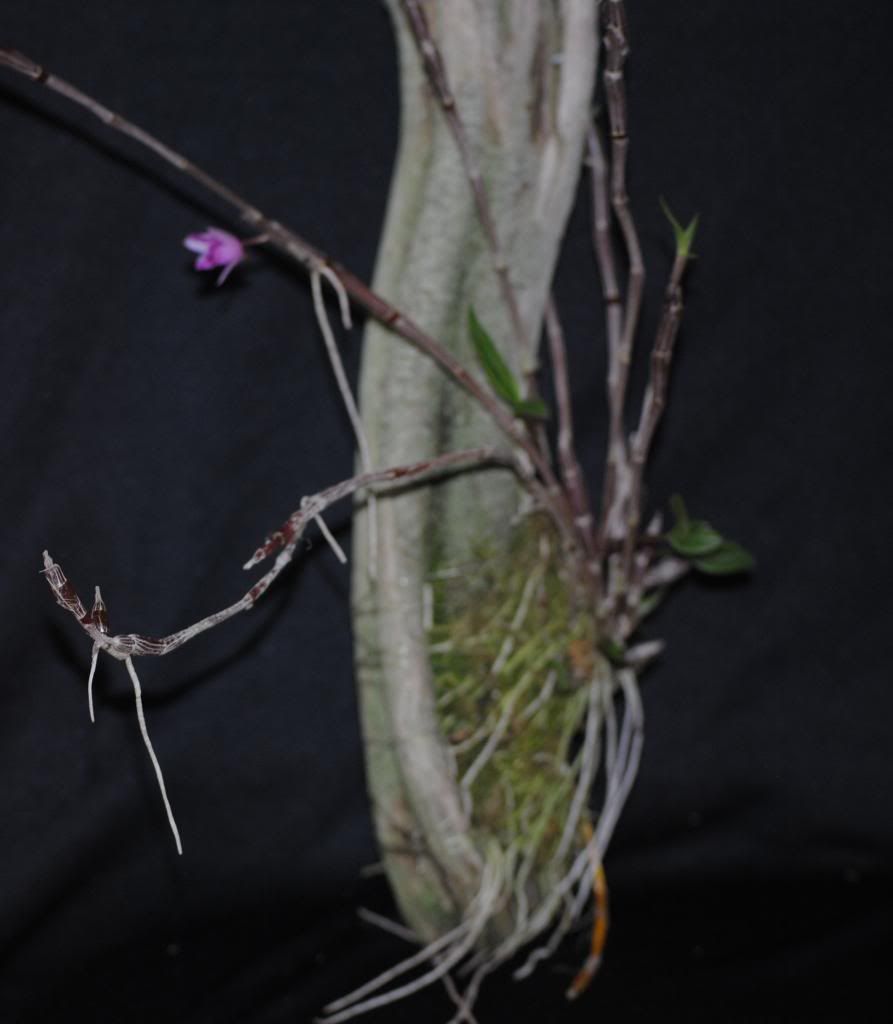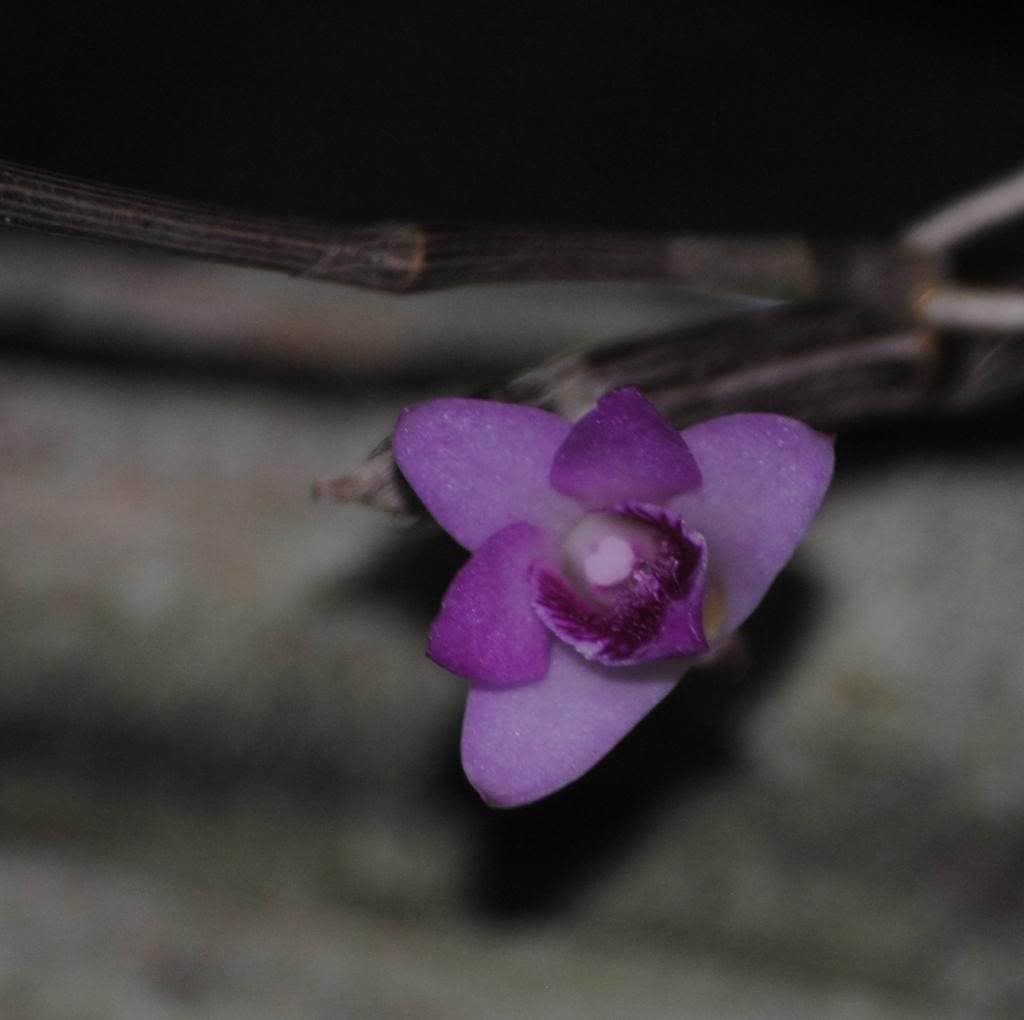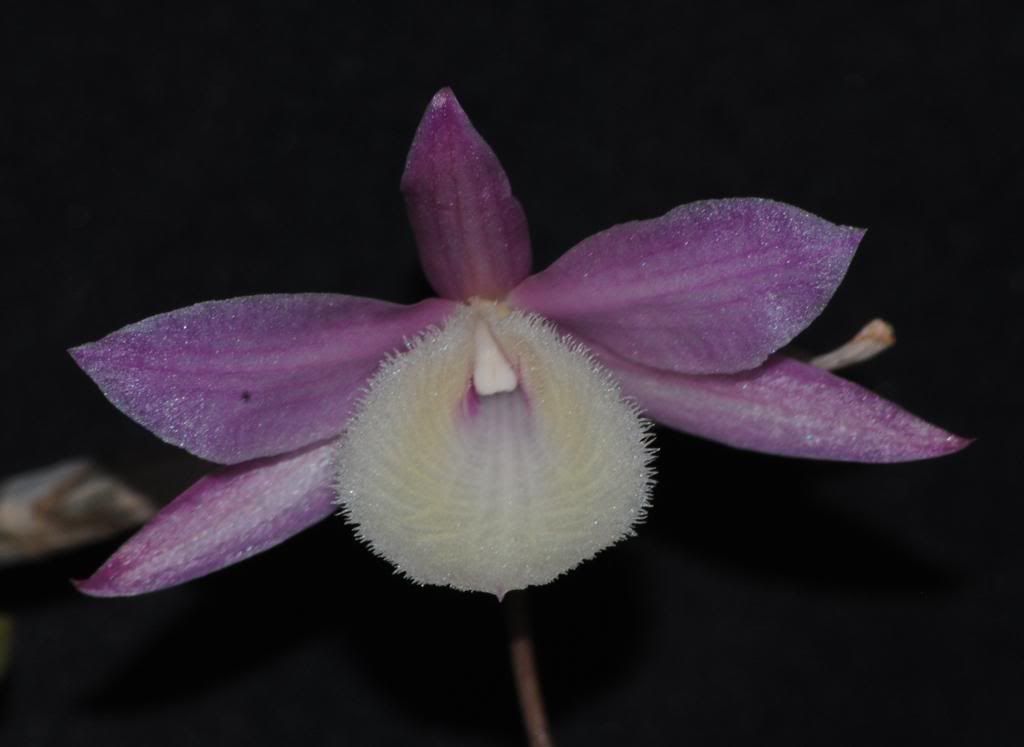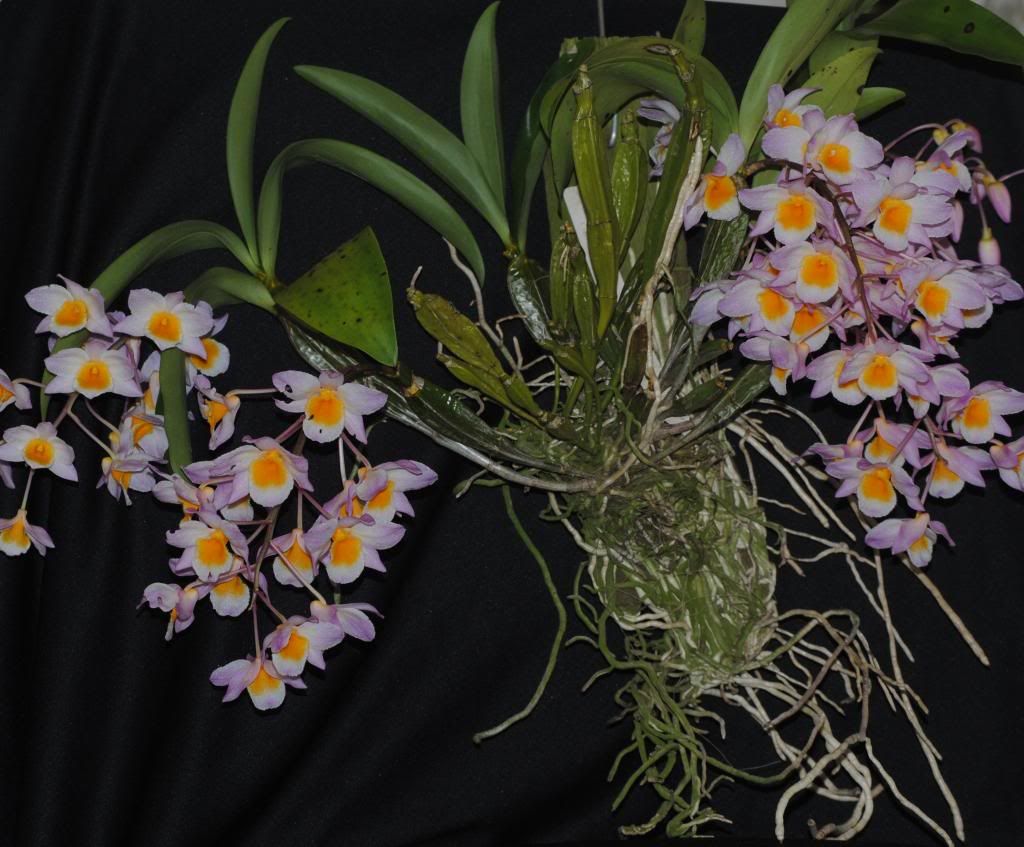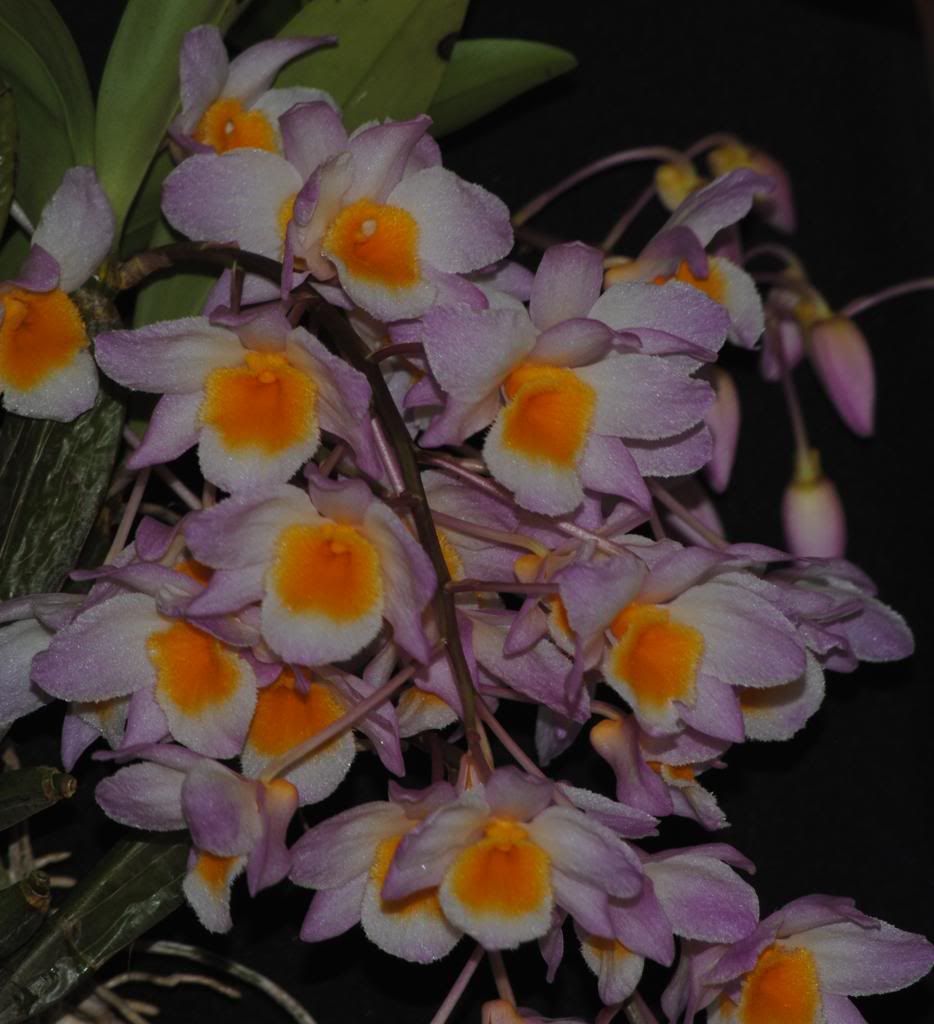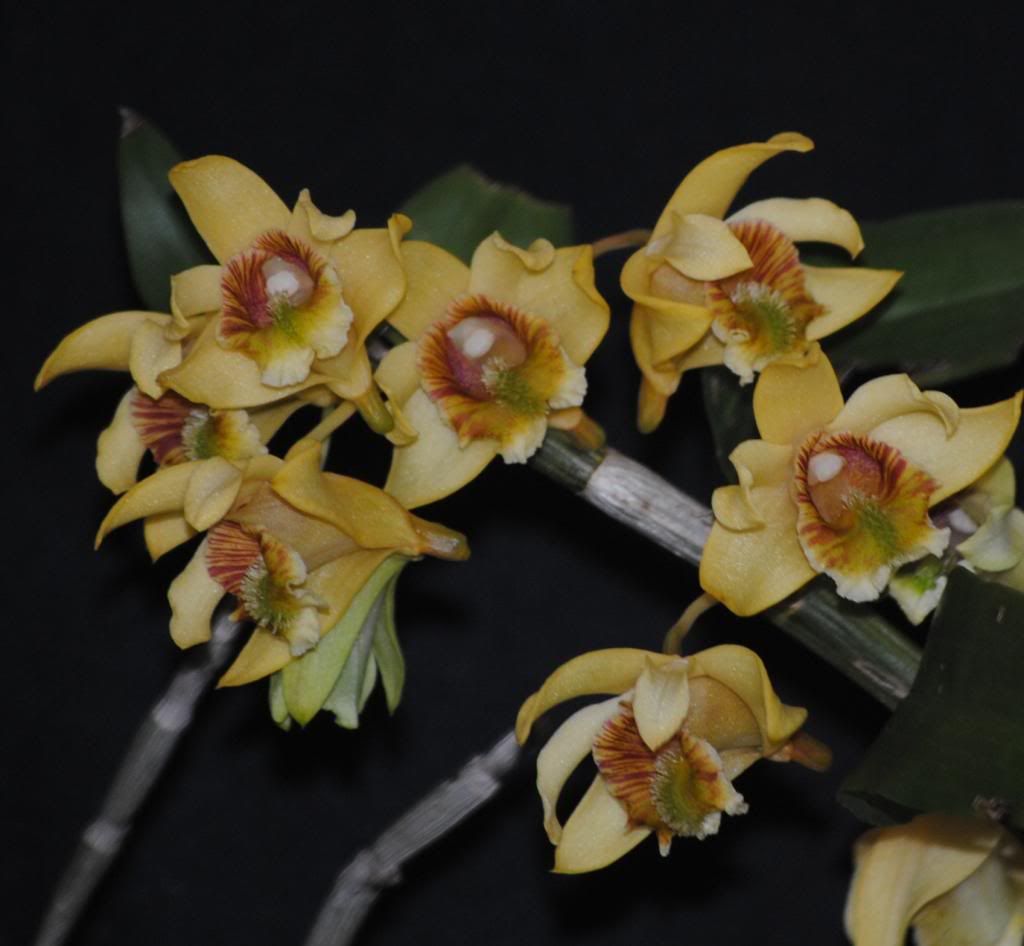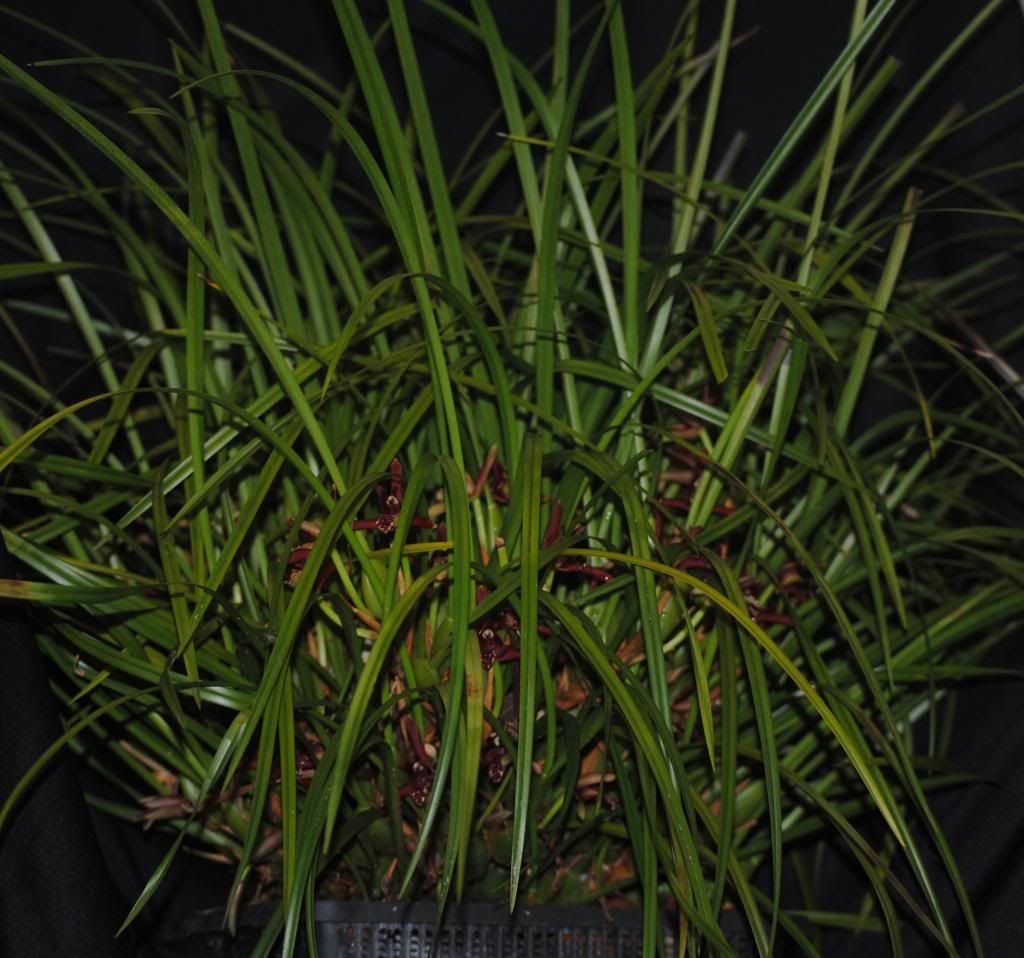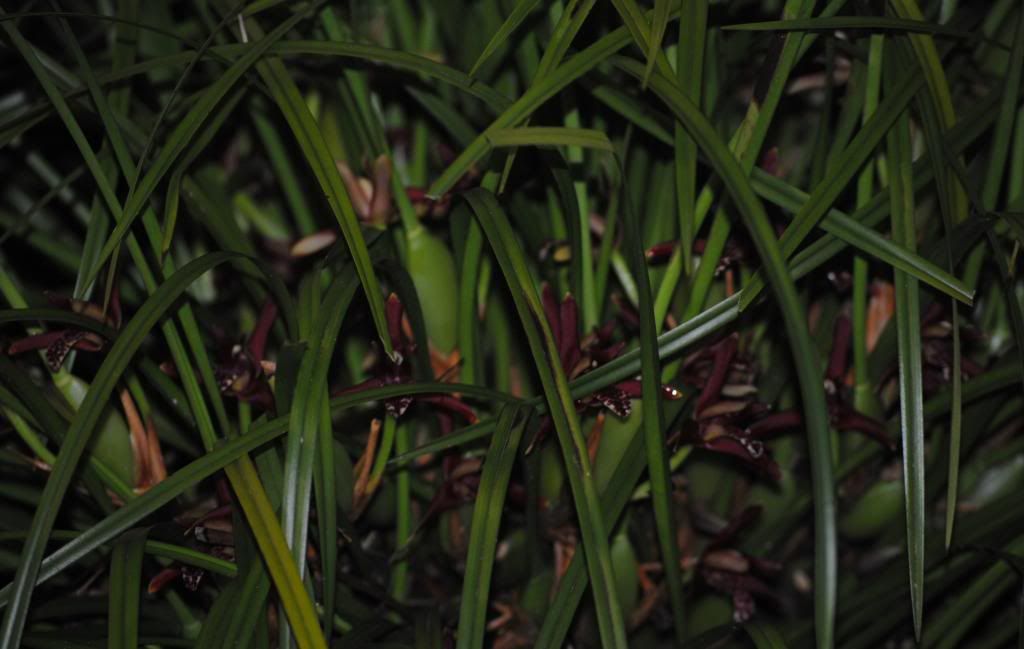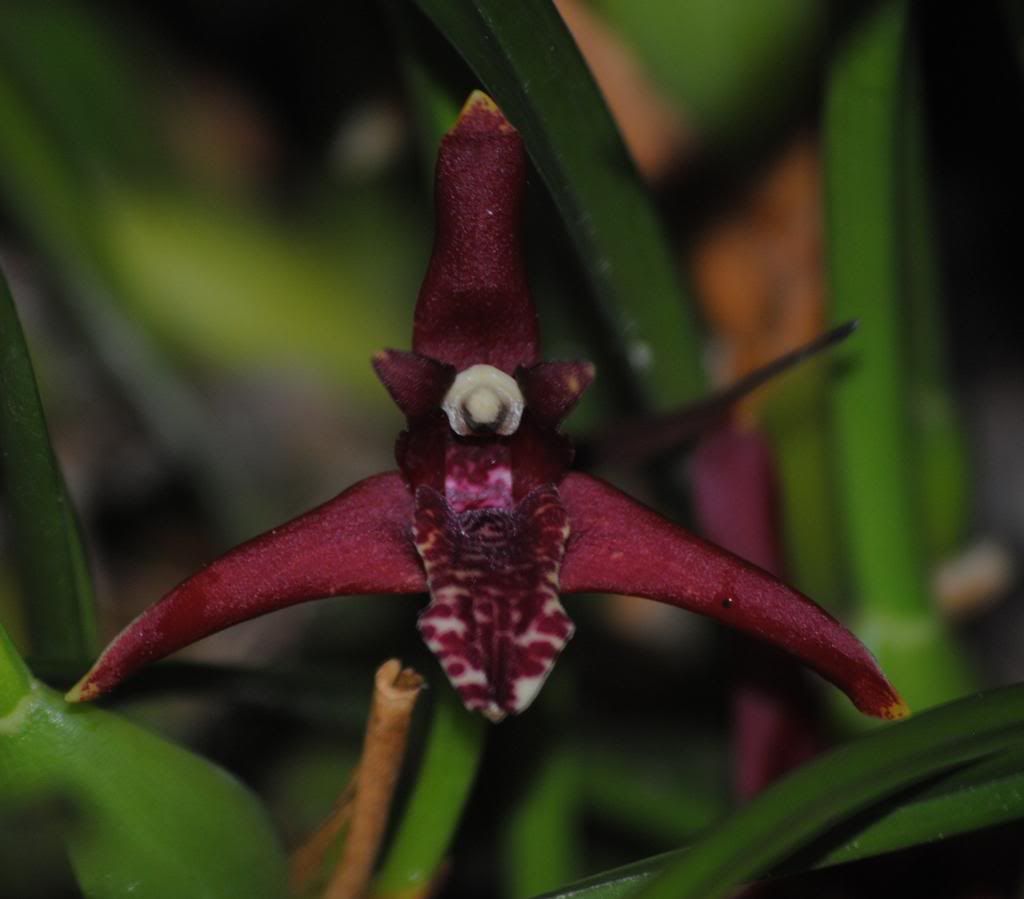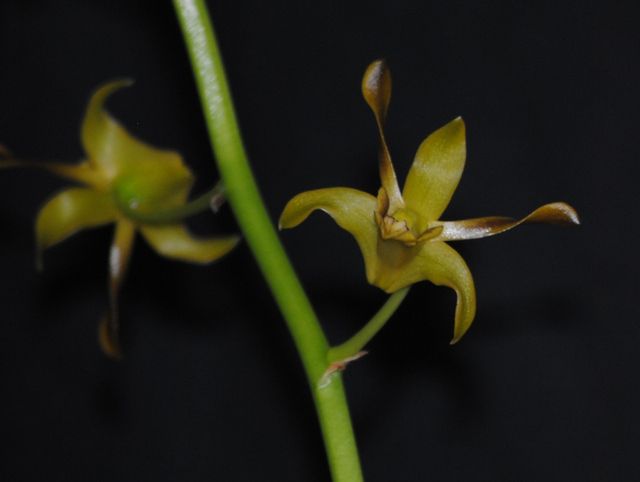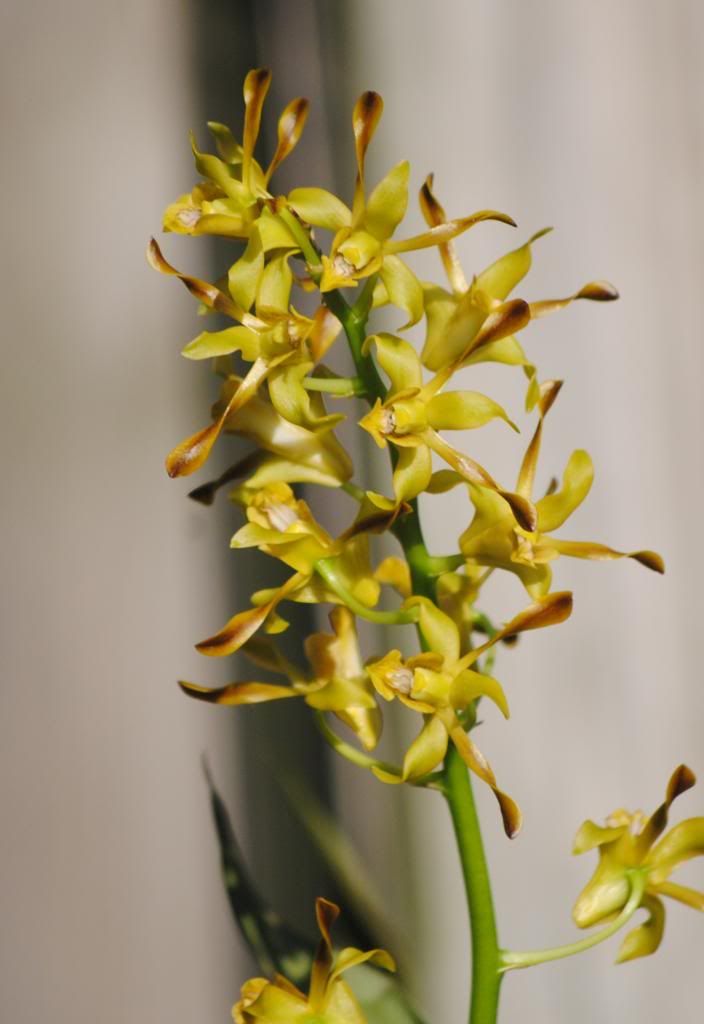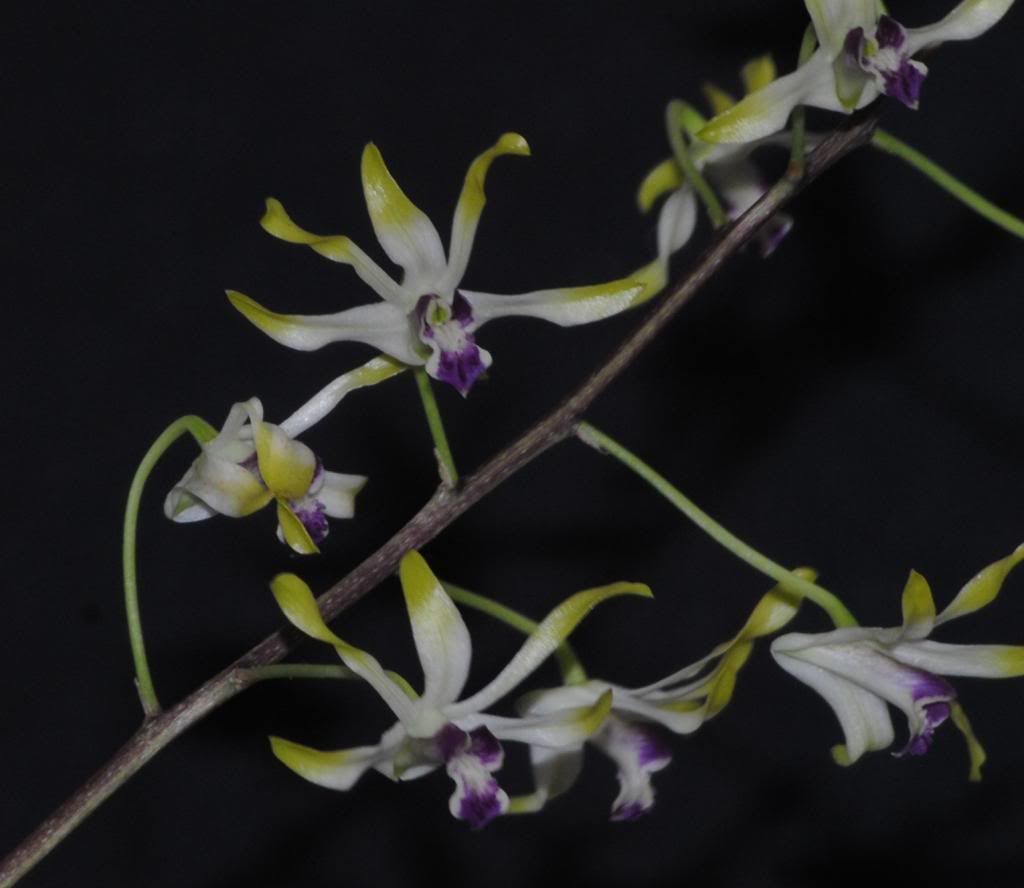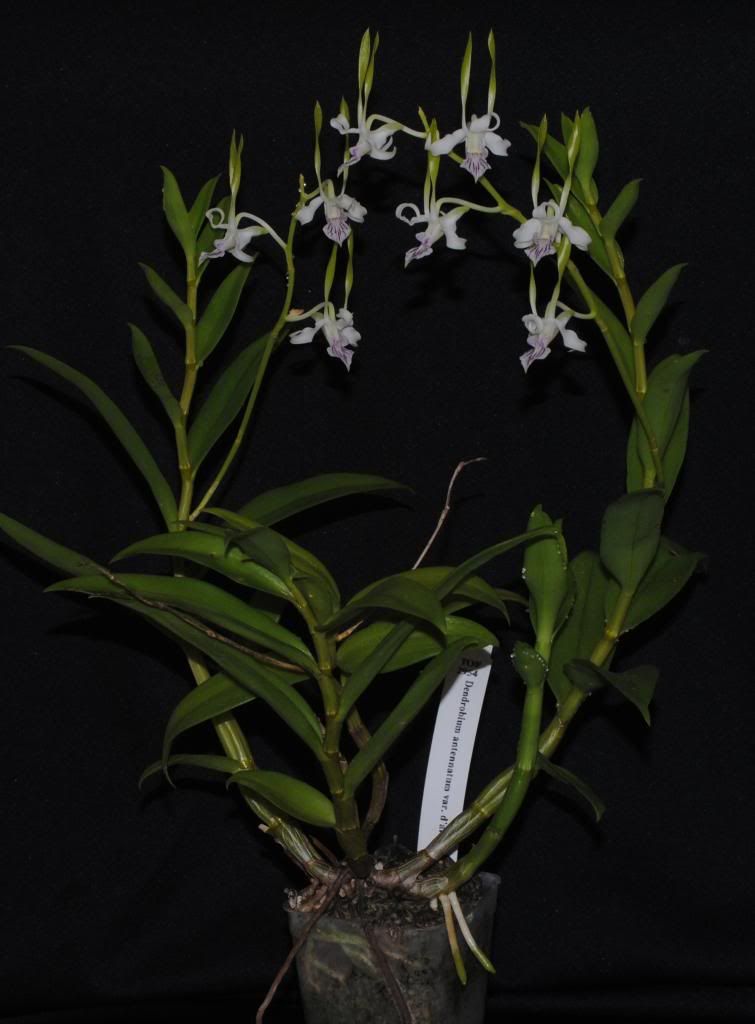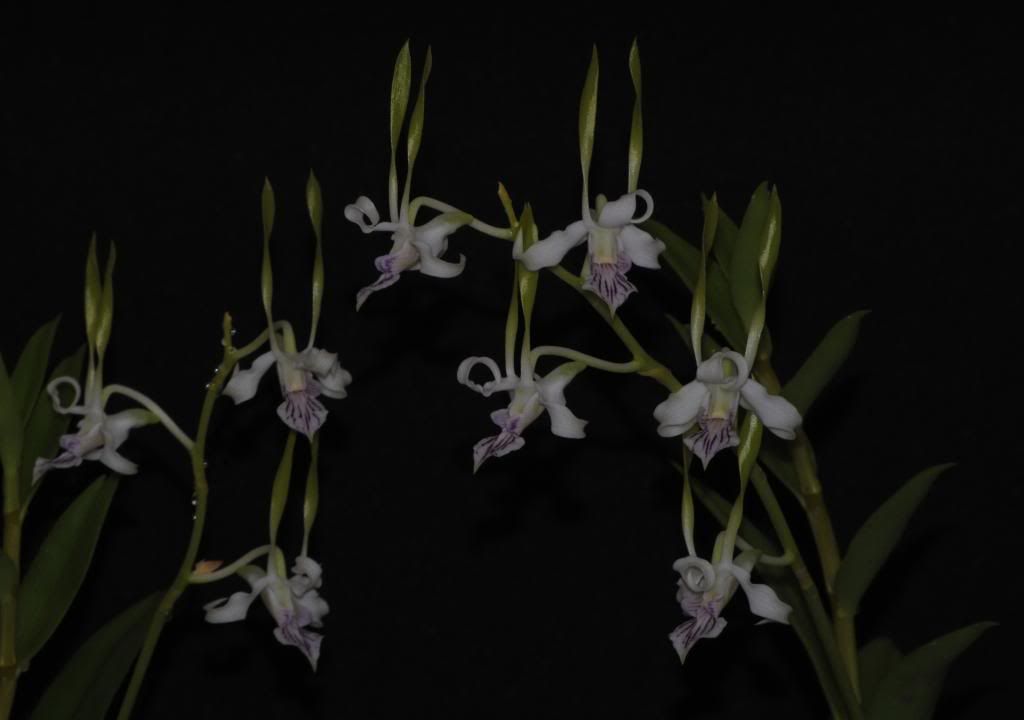Hoya davidcummingii - Not very big yet, but now has 5 penduncles, growing in S/H, shaded and warm. Has been blooming off and on over the last month now and it definitely is one of the cuter Hoyas. Also, it really likes to root along it's stem, you can see in the whole plant picture.
And Hoya ilagiorum (sp?) now. Although this plant did bloom for me a couple times early this summer, the plant itself doesn't seem very robust. It just doesn't seem to grow as quickly as the rest of the Hoyas. Come next spring, I may try converting it to S/H, see if it responds to that. Right now, I water often, and keep it semi-shaded.
Hoya buottii - A great fuzzy flower, I am growing this one two ways. One in S/H, the other in my Turface/Perlite mix. Both are doing very well, and both bloomed for the first time recently. The first picture below is from this past spring, then a picture from last week, showing how much it has grown this summer. All of these pictures of are the plant in S/H.
And now, Hoya lobbii IML 1427. I'm not crazy about this plant, it just grows up and up. While it's outside, that's not a big deal, but as I grow this one warm, when it comes in for the winter, it's difficult to accommodate. So I pretty much ignore it. What a surprise when I noticed buds the other day, and then they opened!
Also noticed spider mites on this one, guess I'll have to deal with them here soon.
Hope you enjoyed!


